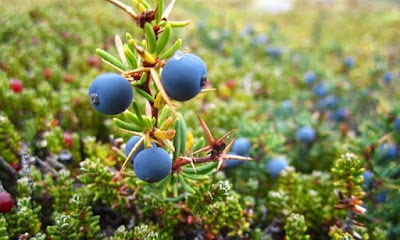Artist and sculptor Wayne Binitie’s immersive science-art exhibition at Glasgow Science Centre
The Arts and Humanities Research Council (AHRC), part of UK Research and Innovation (UKRI), has today [29 June 2021] announced funding of a climate science, art and engineering collaboration featuring newly commissioned artworks by renowned artist and sculptor Wayne Binitie.
Polar Zero opens at Glasgow Science Centre in September and will be on display during the UN COP26 Climate Conference. The immersive exhibition will make an innovative cultural contribution to UK climate science communication, diplomacy and policy. The live and online public exhibition will be accessible to everyone including people with disabilities.
The centrepiece is an original glass sculpture containing air from the year 1765. Extracted from an Antarctic ice core and preserved forever within the sculpture, this air connects us with a pivotal moment in the Earth’s history, the dawn of the industrial revolution. It is a technically challenging piece that is achieved in collaboration with British Antarctic Survey’s ice core labs, and Arup’s advanced engineering capability. The entire creation process will be captured on video and be accessible online.
Wayne, an AHRC-funded PhD student at the Royal College of Art, is strongly motivated by the urgent need to address the climate crisis and has previously exhibited critically-acclaimed climate-inspired pieces at the V&A Museum and Arup. Thanks to his longstanding commitment to exploring our planet’s glacial past, present and future through contemporary art, Wayne formed a unique relationship with the British Antarctic Survey (BAS) and Arup.
British Antarctic Survey ice core scientist Dr Robert Mulvaney said:
“We are delighted that AHRC is funding Polar Zero. Our research collaboration with Wayne has evolved over the last five or six years. It has been a journey of discovery for both artist and scientists and involved high levels of creativity. Exchanging ideas in the ice core lab or over a coffee was exciting and stimulating and we hope that our exhibition and online visitors can feel inspired, share our enthusiasm and see the world differently. Antarctic ice is an archive of the Earth’s hidden climate history. The skill of the artist is in helping us tap into human emotion to provoke curiosity, action and hope for the future.”
A programme of public and government engagement, as well as media and social media activity around the exhibition will stimulate new ways of thinking and express the impact of climate change on humanity. Polar Zero emerges as the need to understand the human and non-human history of the Polar Regions is more urgent than ever before.
Professor Christopher Smith, AHRC Executive Chair, said:
“COP26 is an invitation for all of us to rethink our way of life. When the arts and the sciences come together, they have the power to stir something inside of us and inspire lasting change. This exhibition will demonstrate what we can achieve when we use the arts to inspire people to connect to the human emotion of climate change, driving us all to build a greener, more sustainable future.”
Dame Jo da Silva, Global Sustainable Development Leader, Arup said:
Dr Paul Thompson, Vice-Chancellor of the Royal College of Art, said:
“Wayne Binitie’s time capsule of the Earth’s atmosphere from the year 1765 captures all the magical curiosity of an insect fossilised in amber. A pre-industrial world, frozen in glass, provokes powerful emotions and demands a call to action from delegates at COP26. It has been a real privilege for me, watching Wayne’s research evolve with the support of the AHRC over the past few years.
Timeline from Ice core data:
About Wayne Binitie: For the last 5 years Wayne has collaborated on the ‘Data as Art’ project Polar Aesthetics with ice core scientists, the creative team and public engagement specialists at BAS. This project has led to public exhibitions, and the involvement of engineering expertise from Arup. Wayne is funded via a National Productivity Investment Fund award administered by the Techne AHRC Doctoral Training Partnership (DTP). The project is a critical element of Wayne’s AHRC-funded PhD research with the Royal College of Art. Wayne’s practice-based research investigates the urgent and ethical stewardship of glacial water at a time of accelerating climate change. What are the environmental risks posed by the rapid disappearance of glacial water? How can a contemporary art practice communicate the urgency of climate change to new audiences? What hidden histories written in polar ice can contemporary art reveal? How is polar history written, read and made legible in the present? Wayne’s research and art seeks to answer these questions and more and the Polar Zero exhibition will play a key part in this.















